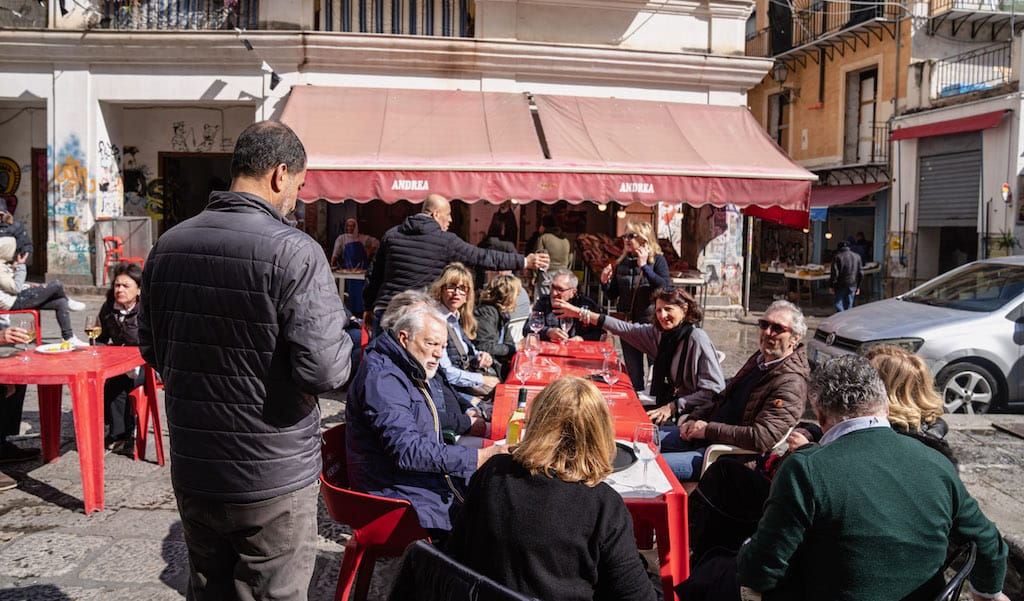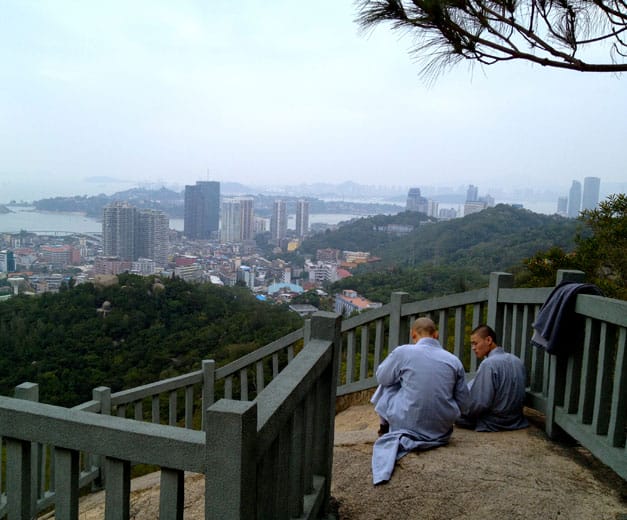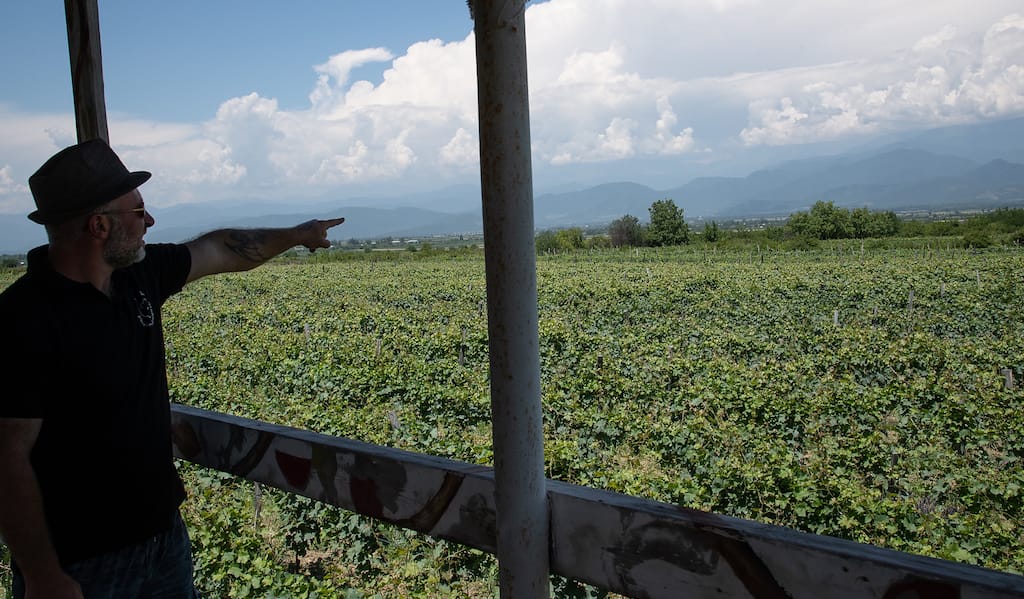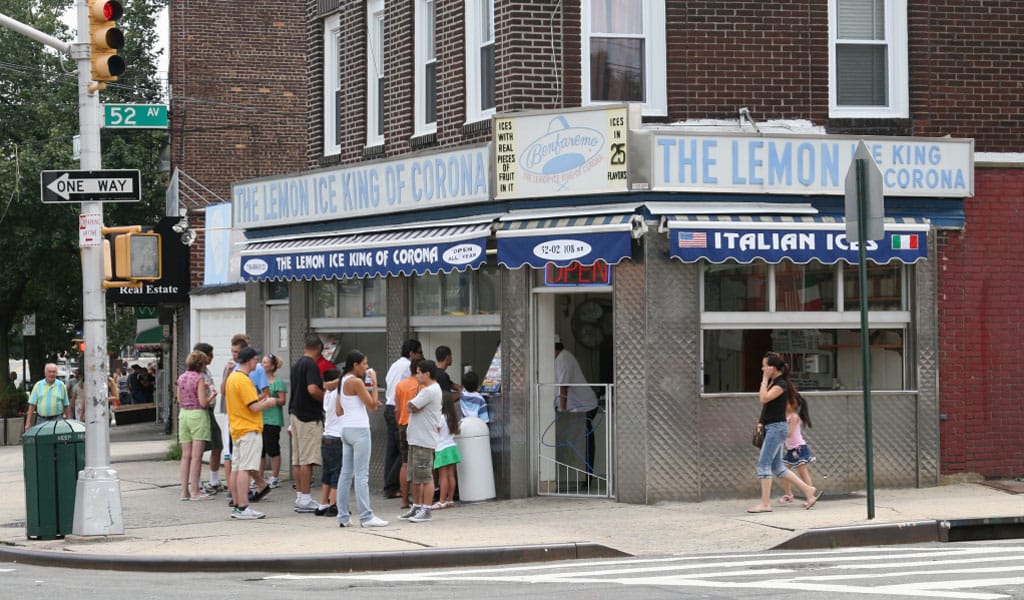As the sun dawns over the city of Palermo, warming the narrow streets still dampened by the night, merchants in the old quarter set up stands with their products: plentiful fruits, vegetables, meat and fish await the Palermitans who prefer to do their shopping here rather than in supermarkets illuminated by cold neon lights.
At the Vucciria, one of the city’s historic markets, Andrea Vattiato is setting up the fish counter where he has worked for half a century. He displays on ice a selection of the best fish the Mediterranean Sea has to offer, and with the help of a hose he wets the fish. The floor of the market is wet, too; one risks slipping – there is a local proverb, “When the stones of the Vucciria dry up,” that is used to indicate an event that will never happen.
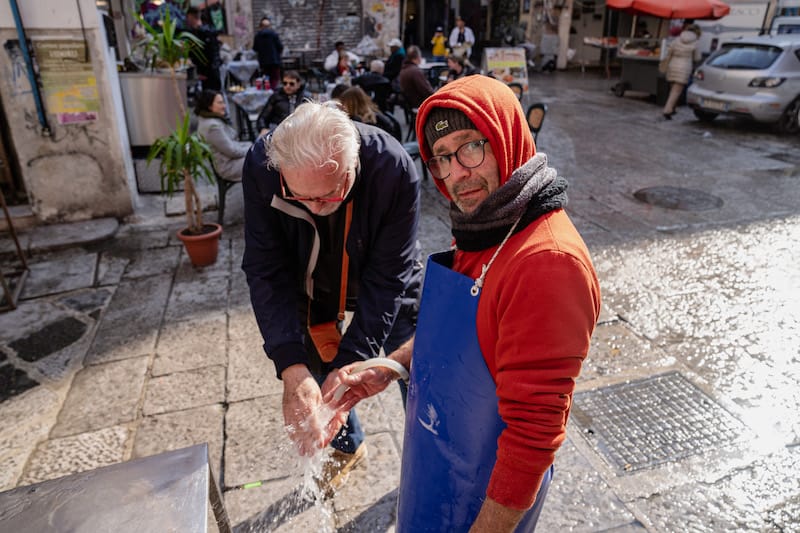
In the Ballarò market, the merchants have already been awake for a few hours and are ready to start their work. The nighttime silence is interrupted by the noises and shouts with which the merchants begin to warm up their voices in anticipation of their abbanniate, a kind of shouted chant, the characteristic local way of advertising the goods for sale.
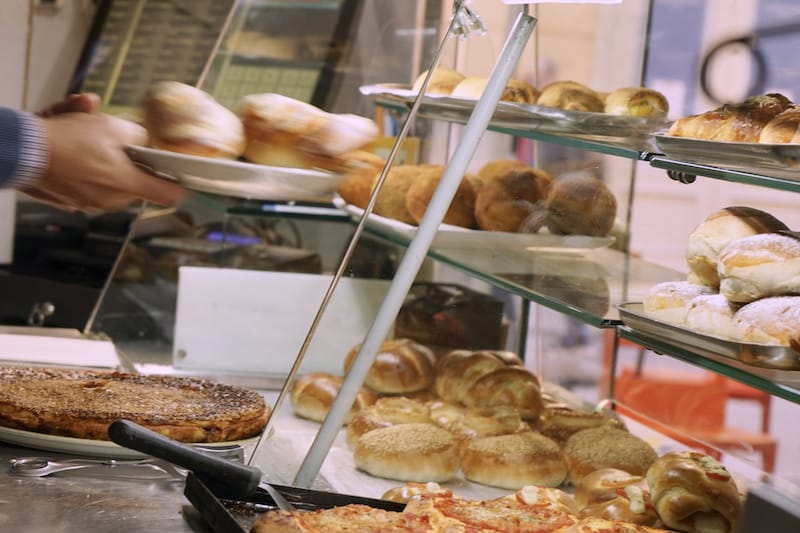
Half an hour later, at Bar Massaro, in front of the university citadel, students, clerks and workers create a chaotic crowd waiting for the first coffee of the day. Before coffee, however, it is customary to eat a cornetto or pezzi (“piece”) of rosticceria, fried and filled dough in its many glorious iterations: ravazzata, arancine with meat or butter, rollò, pizzetta, fried or baked calzone, spitino con la carne, rizzuole, crostini, mattonella. The rosticceria is a true local institution, one Palermitans refuse to give up.
The sun has barely risen, but people in Palermo are already beginning to digest.
A Living Story
This should come as no surprise. Sicily has a millennial history that has integrated many different cultures, and Palermo’s culinary scene is the highest expression of this. Here, each dish is not only a simple assemblage of different ingredients, but a living story that wants to be told and savored.
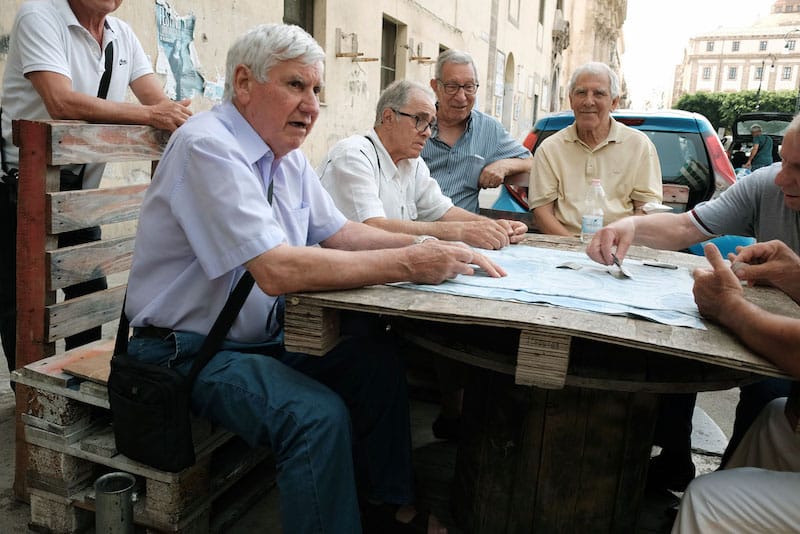
Traditional Sicilian cuisine was born from the food of the poor, made from the scraps that the nobles threw away. From this, necessity has been made a virtue; from poverty, the richness of gastronomic creativity has blossomed. This can still be seen today, in the home-style cooking of the old downtown eateries, the sizzling grills of the city’s street food, the sugary assortment of Sicilian pastries.
Palermitan cuisine should be enjoyed by taking advantage of all the senses at hand. From the sense of smell, which picks up the thousands of odors given off by the preparation of the dish; to sight, struck by the variegated colors and imaginative presentations; hearing, which catches the sizzle of frying and the crackling of fat on the embers; to touch – many foods are eaten using only the hands; to taste, of course – the explosion of flavors in the mouth is an unforgettable experience.
Cooking Innovation
In a land strongly tied to tradition, however, innovation is also finding its way. Not only in terms of revisiting classic recipes in a contemporary key: innovation is, above all, cultural and social. A new generation of young people, historically forced to emigrate abroad to create a future for themselves, has decided to stay or return to the city to bet on Palermo’s future, opening establishments from where they seek to change not only the city’s gastronomic scene, but also its cultural landscape.
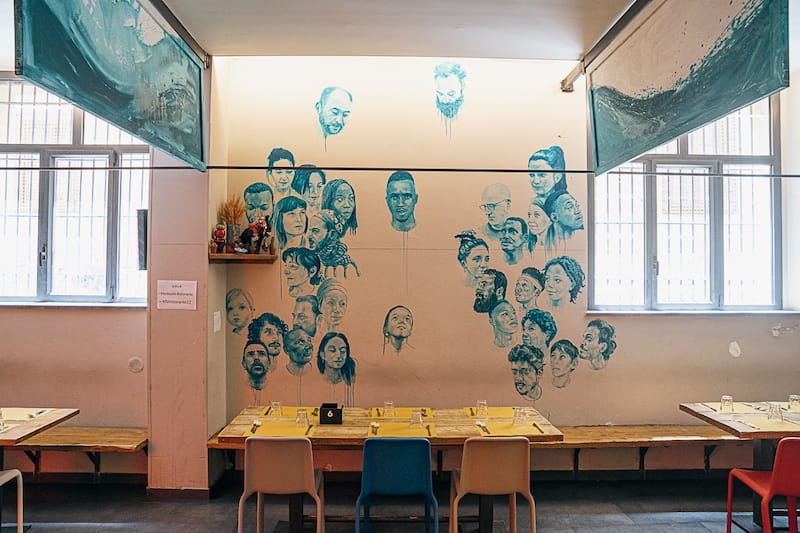
At Ballarak, a craft brewery that owes its name to the historic Ballarò market in the Albergheria district, guests can now enjoy dozens of beers produced with local ingredients, like mango, mulberry, grapefruit, pomegranate and tangerines. About seven years ago, a group of friends decided to take a risk by opening their establishment in one of the city’s most neglected areas. Ballarak began to attract a new clientele that immediately appreciated the brewery’s efforts. Given the success, Ballarak followed with a second location in Piazza Magione. Once an abandoned place known for drug dealing and prostitution, the piazza was given new life thanks to Ballarak and the other venues that have bet on this beautiful square in the past few years.
The Ballarò area is not only home to the famous market; it is also a multiethnic neighborhood where some 25 different languages are spoken. Here we can also find Moltivolti, a gastronomic and cultural Babel that has made an innovative business model out of social integration. Born in 2014 from the encounter of 14 people from 8 different countries (Senegal, Zambia, Afghanistan, Bangladesh, France, Spain, Gambia and Italy), many of them asylum seekers and political refugees, Moltivolti is a restaurant and coworking space based on social inclusion, diversity and citizenship. While volunteer associations, social workers and students meet in the coworking space, the restaurant offers a menu that mixes traditional Sicilian recipes, African cuisine and international dishes. Chef Antonio Campo leads the Moltivolti team, recovering grandmothers’ recipes from different countries, to make food a tool for dialogue among different people and cultures.
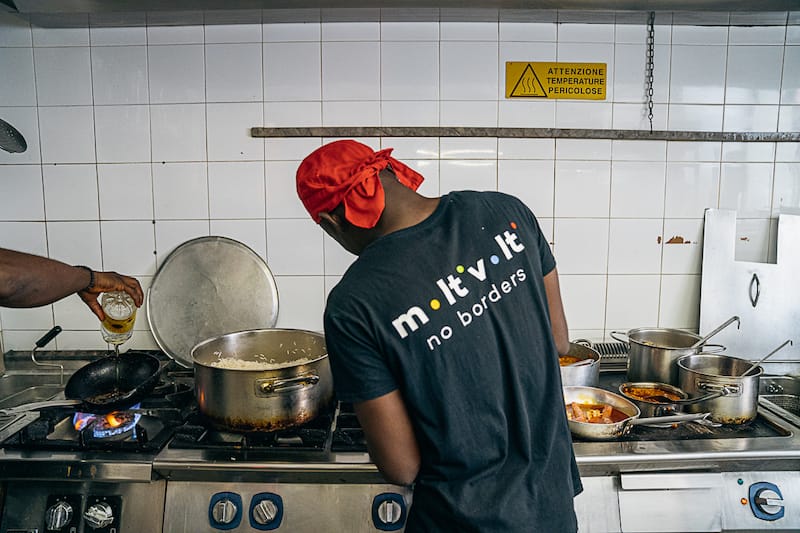
Over time, the restaurant has been joined by three other related businesses: the Altrove bar/café, the Sopra guesthouse, and the Barconi ice cream shop, which owes its name to a play on words: Bar/Coni, a bar that sells ice cream cones; but which also refers to the precarious barges on which migrants travel to the Sicilian coast. Their motto is “My land is where my feet stand,” a welcoming statement that stands in stark contrast to how migrants have recently been received in other parts of Italy.
Rethinking The Past
There are also some fascinating innovations happening in terms of how Palermitans are relating to their past. Palermo and Sicily are unfortunately known for the historical presence of the Mafia, which has had the effect of oppressing not only society but also the economy. This is why the new generation that is betting on its future here has decided to challenge some of the old ways. Sicily may be the birthplace of the Mafia, it is equally true that the Antimafia, a cultural and social movement that opposes the dominance of Cosa Nostra, was also born here.
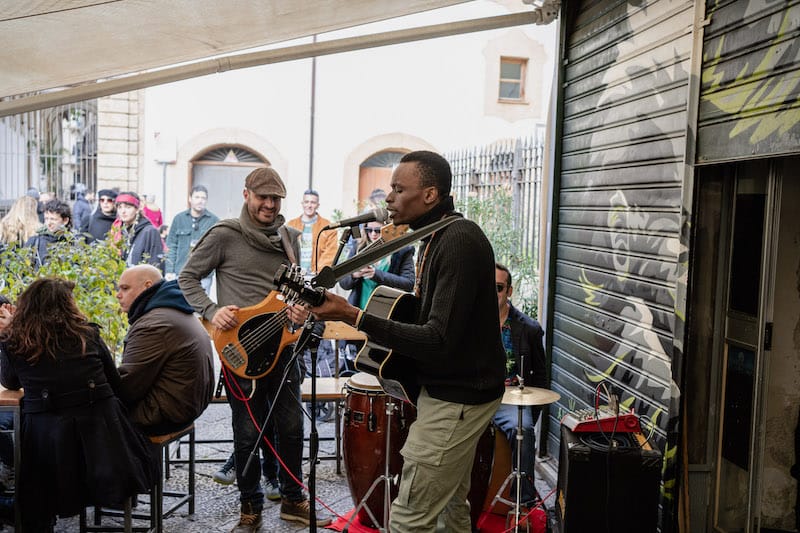
Since the 1980s, Italy has had a law that provides for the confiscation of mafia assets and their restitution to society, allowing hundreds of organizations to flourish over the past four decades that use these assets for social purposes. Inspired by the peasant movements of the late 1800s and after World War II, associations and cooperatives named after mafia victims have sprung up in every part of Sicily, cultivating lands that once belonged to the mafia. Thus, where exploitation, bullying and illegality once reigned, today rights and hopes are cultivated. Young people who have decided to stay here and migrants who have arrived in Sicily in search of a better future work together in the fields where they grow and raise not only vegetables and livestock, but new practices, ideas and integrative policies.
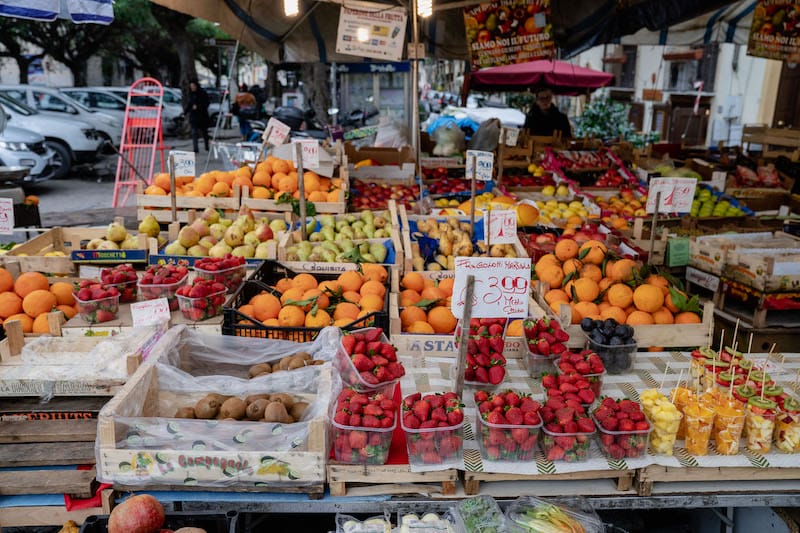
In Palermo, one of the best-known associations is called Addiopizzo. It began its activities in 2004, when Palermo woke up plastered with stickers that read “An entire people who pay pizzo is a people without dignity.” The “pizzo” is the racket imposed by mafiosi on merchants who, in order to stop being threatened, are forced to pay extortion: this finances the mafia and the legal economy is polluted and irreparably compromised. But for several years now, this phenomenon has been declining thanks to a cultural revolution wrought by anti-mafia associations. Here we can see the effects of “critical consumption”: free citizens who refuse to shop at businesses that pay protection money or are close to mafia circles.
A New Dawn
From the countryside to the city, the entire production chain is being rethought and revolutionized. This new generation is enacting a social, civil, commercial and human redemption to free themselves from the dark years experienced by their parents and grandparents, and to create a brighter future.
As the sun sets and you find yourself eating a pizza cooked with produce grown on land confiscated from the Mafia, or sipping a craft beer at an establishment that refuses to pay pizzo, know that change in Palermo is already underway, and that you can be a part of it.
In the evening, the city comes even more alive, becoming one big outdoor venue. From Politeama to Massimo, from Vucciria to Piazza Sant’Anna to Piazza Magione, you will find pubs and streets buzzing with people with a glass in hand.
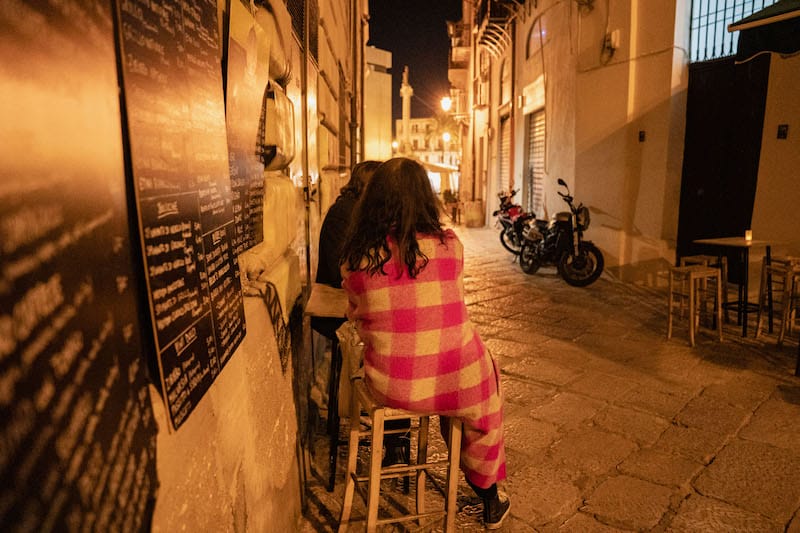
Some squares become nightclubs, with people dancing and improvised DJs who have rolled up with two speakers installed on a bicycle. It only takes a little to create the right atmosphere. If you somehow still have room for more, you can find a late-night bite at Ganci Night and Day deli or the Cornetteria al Tribunale, both open all night.
In a few hours the sun will rise again over Palermo. The balàte of the Vucciria, sticky with beer and marsala wine, will be washed down with water once again. At the Ballarò market, merchants are scrambling to begin another day of work, among artichokes, meat and fish, shouting the classic abbanniata. The city’s bars will soon be crowded with workers, students and Palermitans waiting for their first coffee, croissant and calzone.
One day is about to end and another to begin, but the line between dinner and breakfast is unclear.
Welcome to Palermo. Time to start digesting.
 March 10, 2014 CB on the Road
March 10, 2014 CB on the Road
A scenic highway wraps around the island city of Xiamen, allowing easy access to the […] Posted in Shanghai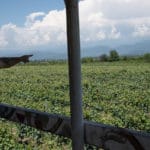 July 21, 2020 Kakheti Diary
July 21, 2020 Kakheti Diary
Georgia had planned to open its borders to tourists on July 1, and we had intended to do […] Posted in Tbilisi April 29, 2021 Dosas and Lemon Ice
April 29, 2021 Dosas and Lemon Ice
Springtime in Queens is a season of promise, particularly the promise that soon, very […] Posted in Queens
Francesco CiprianoFrancesco Cipriano
Published on August 29, 2023
Related stories
March 10, 2014
ShanghaiA scenic highway wraps around the island city of Xiamen, allowing easy access to the mountainous interior and rocky coastline, but on the east coast the natural scenery gives way to man-made propaganda. Three-story-high characters facing the South China Sea dominate the skyline. As red as Mao’s Little Book, these towering characters proclaim “One Country,…
July 21, 2020
TbilisiGeorgia had planned to open its borders to tourists on July 1, and we had intended to do some wine tasting in Kakheti about the same time – two plans that failed utterly. While no one is really sure why Georgia spent weeks preparing us for an open border only to snuff the plan at…
April 29, 2021
QueensSpringtime in Queens is a season of promise, particularly the promise that soon, very soon, your cold-weather wardrobe can be stored away till next winter. Often the weather is blustery and unpredictable, so it's wise to be flexible with your outfit – dress in light layers, carry a mini-umbrella. Provided that you're also willing to…







































